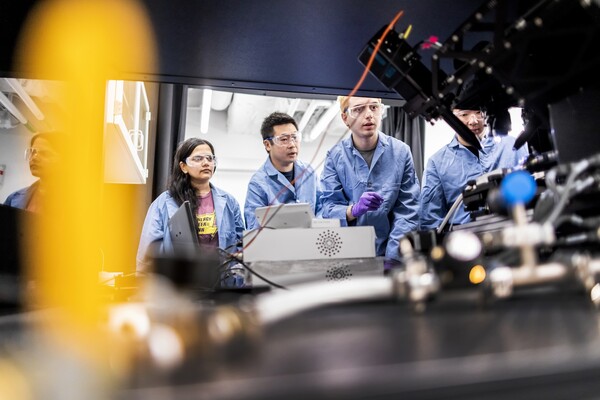
nocred
Since 2007, clinical trials using gene therapy have resulted in often-dramatic sight restoration for dozens of children and adults who were otherwise doomed to blindness. Now, researchers from the Perelman School of Medicine at the University of Pennsylvania and The Children’s Hospital of Philadelphia (CHOP), have found evidence that this sight restoration leads to strengthening of visual pathways in the brain, published this week in Science Translational Medicine.
“The patients had received the gene therapy in just one eye (their worse seeing eye), and though we imaged their brains only about two years later, on average, we saw big differences between the side of the brain connected to the treated region of the injected eye and the side connected to the untreated eye,” said lead author Manzar Ashtari, PhD, director of CNS Imaging at the Center for Advanced Retinal and Ocular Therapeutics in the Department of Ophthalmology at Penn. Ashtari is the former director of Diffusion Tensor Image Analyses and Brain Morphometry at CHOP.
“It’s an elegant demonstration that these visual processing pathways can be restored even long after the period when it was thought there would be a loss of plasticity,” said senior author Jean Bennett, MD, PhD, the F.M. Kirby Professor of Ophthalmology at Penn and director of the Center for Advanced Retinal and Ocular Therapeutics.
The team examined ten patients who have Leber’s congenital amaurosis Type 2 (LCA2), a rare disease that afflicts those who inherit a bad copy of an LCA2 gene from each parent, LCA2 causes their retinas to degenerate slowly and they typically have limited visual function at birth and then experience progressive loss of their remaining vision, rendering them completely blind by mid-life.
In one of the first great success stories for gene therapy, Bennett’s team and others demonstrated the effectiveness of LCA2 gene augmentation in animal tests stretching back to the early 2000s. The basic strategy is to inject a harmless virus that inserts good copies of the normal LCA2 gene into retinal cells. Patients who have received the gene therapy have commonly gone from being blind or near blind to being partially sighted and able to navigate almost normally.
One question hanging over the field has been: even if retinal function improves, how well can the brain’s visual processing pathways recover, after years of near-total blindness in which those unused pathways inevitably will have weakened?
Ashtari, a neuroimaging specialist, addressed this question with several experiments. First she compared the LCA2 group, which had initially received the gene therapy in one eye for safety reasons, to an age-matched control group with normal vision.
Using an advanced method of MRI technique to uncover deep brain connections, she found that while the connectivity of the visual pathway from the treated eye in LCA2 patients was similar to that of sighted controls, the untreated eye showed weaker connectivity to the brain as compared to the connections for the treated side. The data showed that the retina-brain pathways in the treated eyes in the LCA2 group seemed nearly as robust as the corresponding pathways in the sighted control group, implying that these pathways had largely rebuilt themselves in the LCA2 patients, following their retinal intervention.
Click here to view the full release.
Karen Kreeger

nocred

Image: Pencho Chukov via Getty Images

The sun shades on the Vagelos Institute for Energy Science and Technology.
nocred

Image: Courtesy of Penn Engineering Today